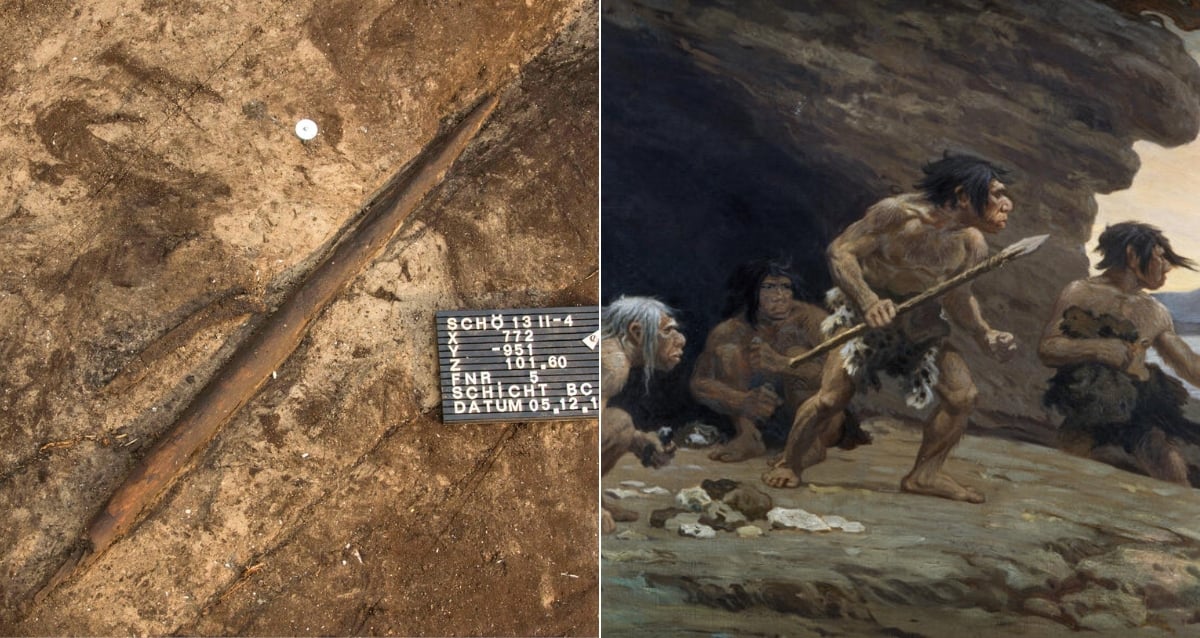Ancient Spears Unearthed in Germany Rewrite Neanderthal History—What They Reveal Will Shock You
Remember when we all thought these prehistoric spears unearthed in Schöningen, Germany were the handiwork of Homo heidelbergensis—that shadowy middleman ancestor stuck between us and the Neanderthals? Well, surprise! New research is flipping the whole script and pointing fingers (or should I say, spears?) at Neanderthals instead. Imagine the look on H. heidelbergensis’ face if they could see this! Not only does this rewrite the timeline a bit, shaving off about 100,000 years, it also shines a spotlight on Neanderthals as not just grunting cave folks but as skilled hunters with brains and social skills sharp enough to craft and wield some of humanity’s oldest known weapons. Who knew our distant cousins had such killer aim—and patience? Get ready to dive into how a handful of fossilized snail shells helped crack this ancient mystery wide open. Curious? You should be. LEARN MORE
Though they were previously believed to have been crafted by Homo heidelbergensis, new research suggests that prehistoric spears found in Schöningen, Germany were actually made by Neanderthals.

Alexander GonschiorThe prehistoric wooden spears found in Schöningen, Germany, now believed to be 200,000 years old.
Prehistoric wooden spears found decades ago in Schöningen, Germany were once thought to be around 300,000 years old. It was thus believed that they were made by an early human ancestor known as Homo heidelbergensis.
New research, however, suggests that the Schöningen spears are actually much younger than previously thought, likely dating back 200,000 years, and were in fact made by Neanderthals.
The Discovery Of Prehistoric Spears In The German Town Of Schöningen
The Schöningen spears are made of spruce and pine, measure six-eight feet long, and are among the oldest known hunting weapons ever found. They were first discovered more than 25 years ago in an open-pit coal mine alongside the remains of nearly 50 horses, which had likely been killed with the spears.

Wikimedia CommonsThe fossilized horse bones found near the spears.
When researchers first found the spears, they estimated that the site was between 300,000 and 400,000 years old, based on the ages of the sediment layers above and below. That estimate led researchers to suspect the spears had been made by Homo heidelbergensis, likely the last common ancestor of both Neanderthals and modern humans.
But according to a new report published in Science Advances, more recent research has changed the timeline of the spears’ construction and use. Now, based on dates obtained from snail shells at the site, researchers believe the spears may only be 200,000 years old, suggesting they were in fact created by Neanderthals.
This, researchers say, suggests that Neanderthal brain development and social structure were more advanced than previously believed.
How The Schöningen Spears Reveal Neanderthals’ Surprising Intelligence

Wikimedia CommonsOne of the Schöningen spears in situ upon its discovery, circa 1997.
Every dating methods has its own set of limitations, making it difficult to get an accurate age estimate for prehistoric objects, especially ones as old as these spears. Radiocarbon dating, for example, is incredibly precise but is only effective for artifacts up to 60,000 years old.
Earlier estimates of the spears’ age based on sedimentary dating led researchers to assume that they were simply too old to have belonged to Neanderthals. Layers of ice above and below the spears indicated they belonged to a warmer “interglacial” period, which wouldn’t fit with the timeline of Neanderthals, who emerged in Europe and the Middle East around 400,000 years ago.
H. heidelbergensis, on the other hand, began to disappear around 300,000 years ago. This made the timeline somewhat difficult, as the spears appeared to have originated in that in-between period when hominin species were evolving. That ambiguity fueled scientific debate about the spears’ age for decades.
“Schöningen was an outlier because of how well preserved the artifacts were, but also because its age didn’t match anything else,” said study co-author Olaf Jöris, an archaeologist at the Leibniz Center for Archaeology.

Wikimedia CommonsThe discovery of one of the Schöningen spears.
Jöris and fellow researcher Kirsty Penkman, of the University of York, decided to help put that debate to rest by analyzing the molecules trapped in the fossilized shells of snails found at the site. They crushed the shells and dissolved their calcium, which released amino acids. Amino acids notably break down at a predictable rate, and by measuring that breakdown across several different amino acids, Penkman could estimate the age of the fossil snails.
Because the spears were found in the same layer of sediment, the age of the shells — 200,000 years old — would match the age of the spears.
“It’s a bit disappointing when you make sites younger rather than older,” Penkman said, “but being 200,000 years old makes more sense from an archaeological perspective.”
Still, not all researchers agreed with this assessment, even in light of the new evidence.



















